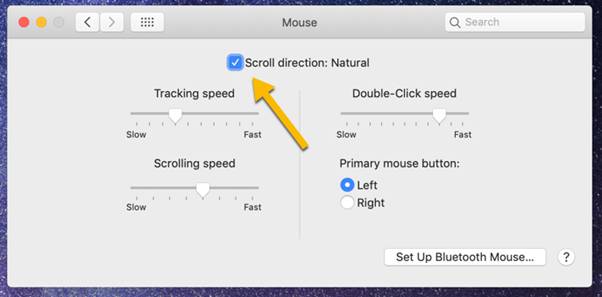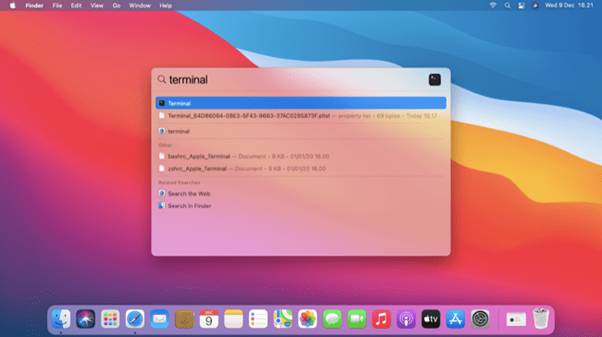How to Turn off Mouse Acceleration on Mac To Enjoy Pinpoint Precision

Are you frustrated with the erratic cursor movements on your Mac? Does your mouse pointer seem to have a mind of its own, zooming across the screen when you least expect it? If so, you’re likely experiencing the effects of mouse acceleration, a feature that can make precise cursor control a challenge.
Fortunately, turning off mouse acceleration on your Mac is a straightforward process. In this article, we’ll guide you through the steps to reclaim control over your cursor’s movements.
Understanding Mouse Acceleration Mac

Before we dive into disabling mouse acceleration, let’s take a moment to understand what it entails and why some users prefer to disable it.
Mouse acceleration is a feature that adjusts the cursor’s speed based on the speed of your mouse or trackpad movements. When enabled, the cursor moves faster with quicker mouse or trackpad motions. While this feature can be helpful for quickly traversing large displays or multiple monitors, it can also make precise cursor control more challenging, especially for tasks that require accuracies , such as graphic design, video editing, or gaming.
For many users, especially those in creative fields or engaging in activities demanding precise cursor control mouse acceleration can prove more burdensome than beneficial. By disabling mouse acceleration, you can achieve a consistent 1:1 ratio between physical mouse or trackpad movements and on-screen cursor movements, thereby enhancing precision and control.
Also read: MacBook Trackpad Not Working? Here’s How to Fix It
Step-by-Step Guide: How to Turn off Mouse Acceleration on Mac
Now that you understand the purpose of mouse acceleration and why you might consider disabling it, let’s dive into the steps to turn it off on your Mac.
Method 1: Using System Preferences
Step 1: Click on the Apple menu icon in the top left corner of your screen and select “System Preferences.” Further, in the System Preferences window, click on the “Mouse” or “Trackpad” icon, depending on your input device.

Step 2: In the Mouse or Trackpad preferences pane, locate the “Tracking Speed” slider and adjust it to a slower setting. This will reduce the overall cursor speed, but it won’t eliminate mouse acceleration.
Step 3: To completely disable mouse acceleration, check the box next to “Uncheck the box to turn off mouse acceleration.” (Note: This option may be named slightly differently depending on your macOS version.)
After following these steps, your mouse or trackpad movements should now be perfectly linear, with no acceleration applied to the cursor’s movements.
Also read: How to Use System Preferences Setting on Mac and Boost Your Productivity
Method 2: Using Terminal
If you prefer a more advanced approach or find the System Preferences method ineffective, you can turn off mouse acceleration using Terminal commands. Here’s how to disable it on Mac using Terminal:
Step 1: Open Terminal (you can find it in the Utilities folder within the Applications folder or use Spotlight Search to locate it).

Step 2: In the Terminal window, copy and paste the following command, then press Enter:
defaults write .GlobalPreferences com.apple.mouse.scaling -1
This command adjusts the mouse scaling value to -1, effectively disabling mouse acceleration.
Step 3: After entering the command, you may need to log out and log back in for the changes to take effect.
By using this Terminal command, you’ve directly modified the system preferences that control mouse acceleration, ensuring a consistent 1:1 mapping between your physical mouse or trackpad movements and the cursor’s on-screen movements.
Also read: How to Scroll Down on Macbook Pro: Effortless Scrolling
Method 3: Using Third-Party Applications
While the built-in methods outlined above should suffice for most users, some may prefer utilizing third-party applications that offer additional customization options or a more user-friendly interface. Popular options include:

- BetterTouchTool: This powerful utility allows you to customize various gestures and input device behaviors, including disabling mouse acceleration.
- SmoothMouse: A dedicated app specifically designed to provide granular control over mouse acceleration, smoothing, and other cursor-related settings.
- USB Overdrive: While primarily intended for customizing gaming peripherals, USB Overdrive also offers options to adjust mouse acceleration and other cursor-related settings.
When using third-party applications, make sure to carefully review their settings and documentation to ensure you disable mouse acceleration correctly and according to your desired preferences.
Tips for Adjusting to Life Without Mouse Acceleration
While disabling mouse acceleration can significantly improve cursor precision, it may take some time to adjust to the new, linear cursor movements. Here are a few tips to help you make the transition:
- Adjust your mouse or trackpad sensitivity: With mouse acceleration disabled, you may need to increase your mouse or trackpad’s tracking speed to maintain a comfortable cursor velocity.
- Practice precise movements: Engage in activities that require precise cursor control, such as image editing or gaming, to retrain your muscle memory for linear cursor movements.
- Experiment with different mouse or trackpad settings: Try adjusting settings like pointer speed, tracking speed, or scrolling speed to find the combination that works best for you.
- Be patient: Like any new skill, adjusting to life without mouse acceleration takes time and practice. Stick with it, and you’ll soon find that precise cursor control becomes second nature.
Also read: How to Delete Messages on Mac: Bid Goodbye to Clutter
Conclusion
This wraps up our guide on how to turn off mouse acceleration on Mac. Disabling mouse acceleration on your Mac can be a game-changer for anyone who values precise cursor control. By following the steps outlined in this guide, you can reclaim a consistent, linear relationship between your physical mouse or trackpad movements and the cursor’s on-screen movements.
Whether you opt for the System Preferences method, the Terminal command approach, or a third-party application, the process is relatively straightforward. And once you’ve adjusted you’ll likely wonder how you ever tolerated the erratic cursor movements caused by mouse acceleration.
So, if you’re ready to take control of your cursor and experience a new level of precision, follow the steps in this guide and bid goodbye to the frustrations of mouse acceleration once and for all.
